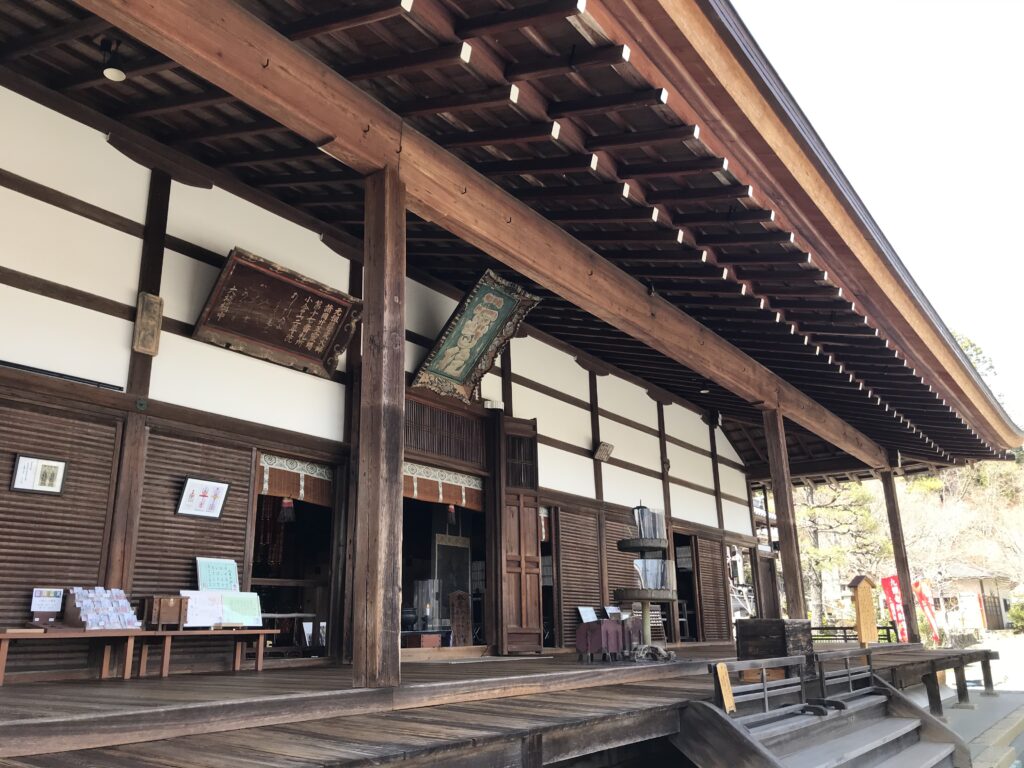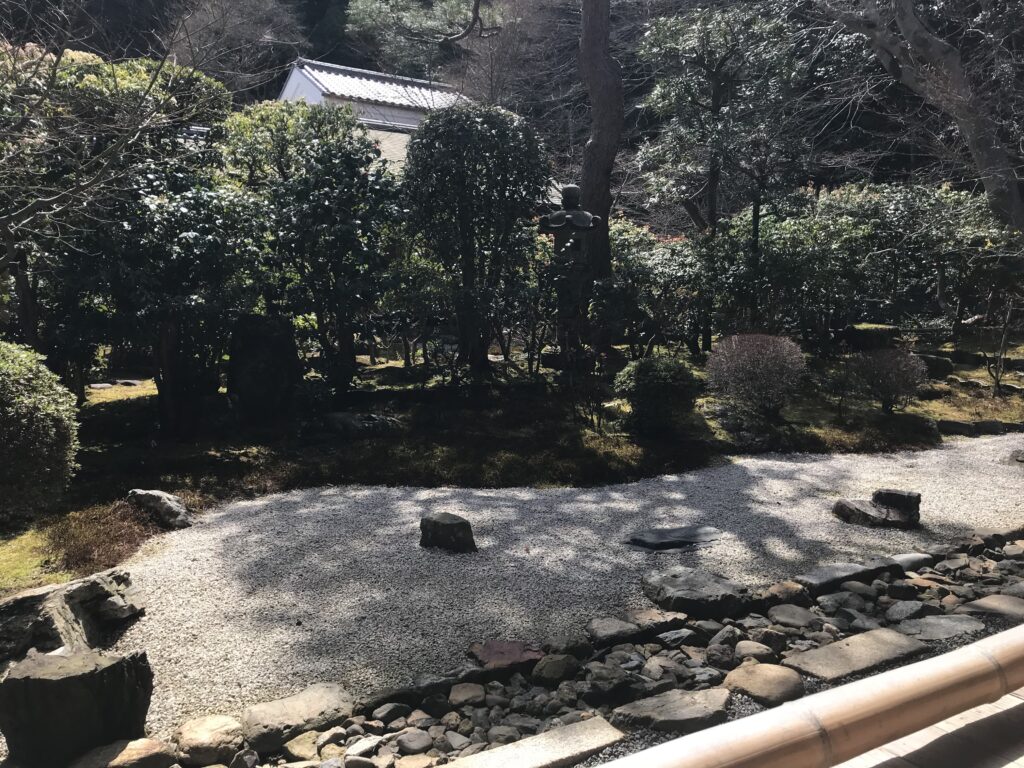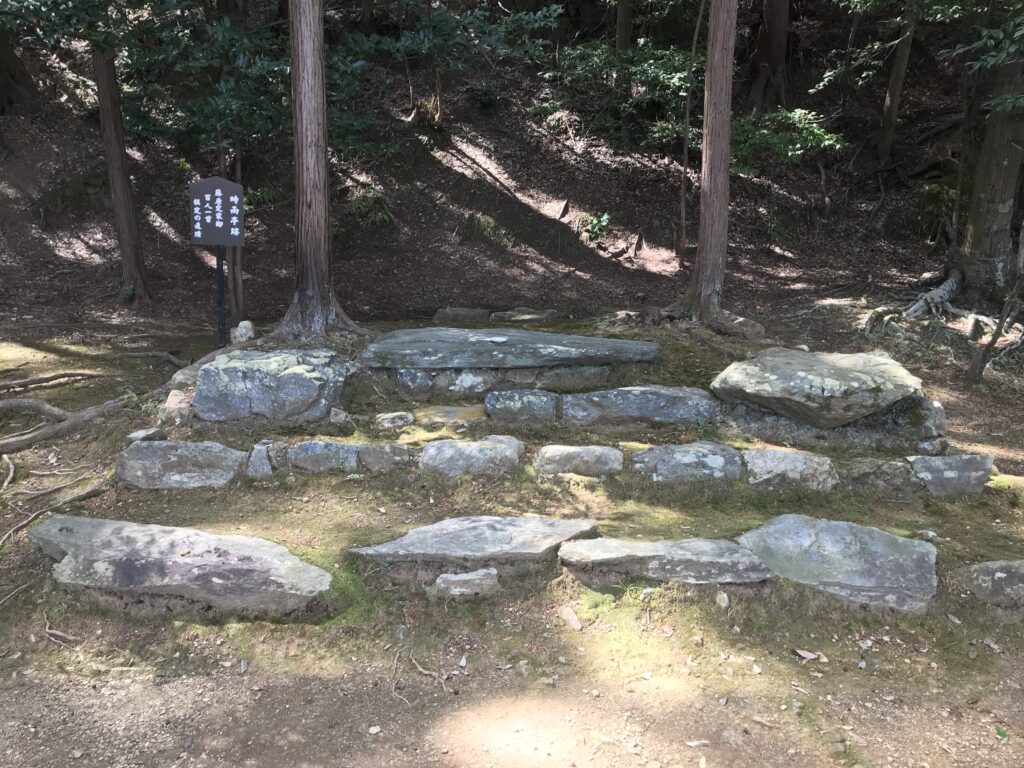送る仏と迎える仏
このお寺も、五木寛之さんの著書「百寺巡礼」シリーズの第九巻、京都Ⅱで知ったお寺です。京都の嵐山方面に行くついでに拝観してきました。五木さんの表現を借りると「送る仏と迎える仏がならぶ寺」となります。まさに、2体の仏さまに本堂でお会いしてきました。

秋には紅葉の名所
総門から入ると、真っすぐに伸びた参道が続いています。ここは秋になると紅葉の名所として親しまれています。参道は少し坂になっていて本堂のある境内にたどり着きます。参道の突き当りから少し左に進むと黒門があります。最初、黒門から入りましたが、もう少し進むと勅使門があるので、勅使門から入り直しました。


勅使門の正面に本堂があります。この中に二如来像が安置されています。お寺からいただいたリーフレットによると、極楽往生を目指す人を此岸から送る「発遣の釈迦」と、彼岸へと迎える「来迎の弥陀」の遣迎二尊が、お寺の名前「二尊院」の由来になっています。

二体の如来に心が安らぐ
向かって右に釈迦如来、左に阿弥陀如来の立像が仲良く並んで、こちらを見つめています。写真を撮るのがはばかられたので、撮影していませんが、確認したい方は、お寺のホームページをご覧ください。一体の仏像だけでも、ありがたいのですが、このように仲良く並んでいると、何か安堵感のようなものを我々拝観者に与えてくれる気がします。

ここでに百人一首が選定された
本堂と納経所の間の中庭を見ながら少し休憩した後、石段を登って時雨亭跡へ向かいました。この二尊院は百人一首にも詠われた小倉山のふもとに広がっています。そして、この時雨亭こそ、藤原定家が百人一首を選定された場所と聞いています。今は建物も無く、土台となった礎石だけが並んでいます。優雅に選定をしていたのかと思いきや、マムシに注意の看板もあり、それほど雅な作業ではなかったのかもしれません。(完)


二尊院の御朱印

二尊院を紹介した書籍
五木寛之さんの「百寺巡礼」第9巻 京都Ⅱにて二尊院が詳述されています。

百寺巡礼 第九巻 京都2 (講談社文庫) [ 五木 寛之 ]
価格:618円
(2021/8/22 19:00時点)
感想(2件)
Nisonin Temple
I learned about this temple from Hiroyuki Itsuki’s book “Hyakudera Pilgrimage” series, Volume IX, Kyoto II. I visited this temple on my way to the Arashiyama area of Kyoto. To borrow Mr. Itsuki’s expression, the temple is “a temple with a Buddha to send and a Buddha to receive. I met exactly two Buddhas in the main hall.
Entering the temple from the main gate, a straight approach leads to the main hall. This place is well known for its autumn leaves in fall. The approach to the temple is slightly sloping and leads to the precincts where the main hall is located. At the end of the approach, a little to the left is the Kuromon gate. At first, I entered the temple through the black gate, but when I went a little further, I found the imperial envoy gate, so I entered again through the imperial envoy gate.
The main hall is in front of the Imperial Gate. In this hall, there are two statues of Nyorai (two nyorai). According to the leaflet I received from the temple, the name of the temple “Nison-in” comes from the two images of “Shakyamuni” who sends people to the other shore and “Yidamuni” who welcomes people to the other shore.
The standing statues of Shakyamuni on the right and Amida Nyorai on the left are standing side by side, looking at each other. I did not take a picture of them because I was hesitant to do so, but if you would like to check them out, please visit the temple’s website. Although it would have been nice to see just one statue of Buddha, I feel a sense of relief when I see them standing side by side in such a friendly manner.
After taking a short rest looking at the courtyard between the main hall and the sutra office, I climbed the stone steps to the Shiguretei site. This Nison-in temple is located at the foot of Mt. Ogura, the site of the famous poem “Hyakunin Isshu” (One Hundred Poems of the One Hundred Poets). It is said that Shiguretei was the place where Fujiwara no Teika selected the poem for the Hyakunin Isshu. Now there is no building, only the foundation stone that served as the foundation. One would think that the selection was done in an elegant manner, but there is a sign warning visitors to beware of pit vipers, so perhaps it was not such an elegant process. (End)

新品価格
¥2,420から
(2022/5/6 23:06時点)
Temple Nisonin
J’ai appris l’existence de ce temple dans le livre de Hiroyuki Itsuki, série “Hyakudera Pilgrimage”, volume IX, Kyoto II. J’ai visité ce temple en me rendant dans la région d’Arashiyama à Kyoto. Pour reprendre l’expression de M. Itsuki, ce temple est ” un temple avec un Bouddha à envoyer et un Bouddha à recevoir “. J’ai rencontré exactement deux bouddhas dans le hall principal.
En entrant dans le temple par la porte principale, une approche rectiligne mène à la salle principale. Cet endroit est bien connu pour ses feuilles d’automne en automne. L’approche du temple est légèrement en pente et mène à l’enceinte où se trouve la salle principale. Au bout de l’approche, un peu à gauche, se trouve la porte Kuromon. Au début, je suis entré dans le temple par la porte noire, mais en allant un peu plus loin, j’ai trouvé la porte des envoyés impériaux, je suis donc entré à nouveau par la porte des envoyés impériaux.
Le hall principal se trouve en face de la porte impériale. Dans ce hall, il y a deux statues de Nyorai (deux nyorai). Selon le dépliant que j’ai reçu du temple, le nom du temple “Nison-in” vient des deux images de “Shakyamuni” qui envoie les gens sur l’autre rive et de “Yidamuni” qui accueille les gens sur l’autre rive.
Les statues debout de Shakyamuni à droite et d’Amida Nyorai à gauche se tiennent côte à côte et se regardent. Je n’ai pas pris de photo d’eux car j’hésitais à le faire, mais si vous souhaitez les voir, veuillez consulter le site Web du temple. Même s’il aurait été agréable de ne voir qu’une seule statue de Bouddha, j’éprouve un sentiment de soulagement en les voyant se tenir côte à côte de manière si amicale.
Après m’être reposé un peu en regardant la cour entre le hall principal et le bureau des sutras, j’ai gravi les marches en pierre jusqu’au site de Shiguretei. Ce temple Nison-in est situé au pied du mont Ogura, où se trouve le célèbre poème “Hyakunin Isshu” (les cent poèmes des cent poètes). On dit que Shiguretei était le lieu où Fujiwara no Teika a choisi le poème pour le Hyakunin Isshu. Aujourd’hui, il n’y a plus de bâtiment, seulement la première pierre qui servait de fondation. On pourrait penser que la sélection a été faite d’une manière élégante, mais il y a un panneau avertissant les visiteurs de se méfier des vipères, alors peut-être que ce n’était pas un processus si élégant. (Fin)
